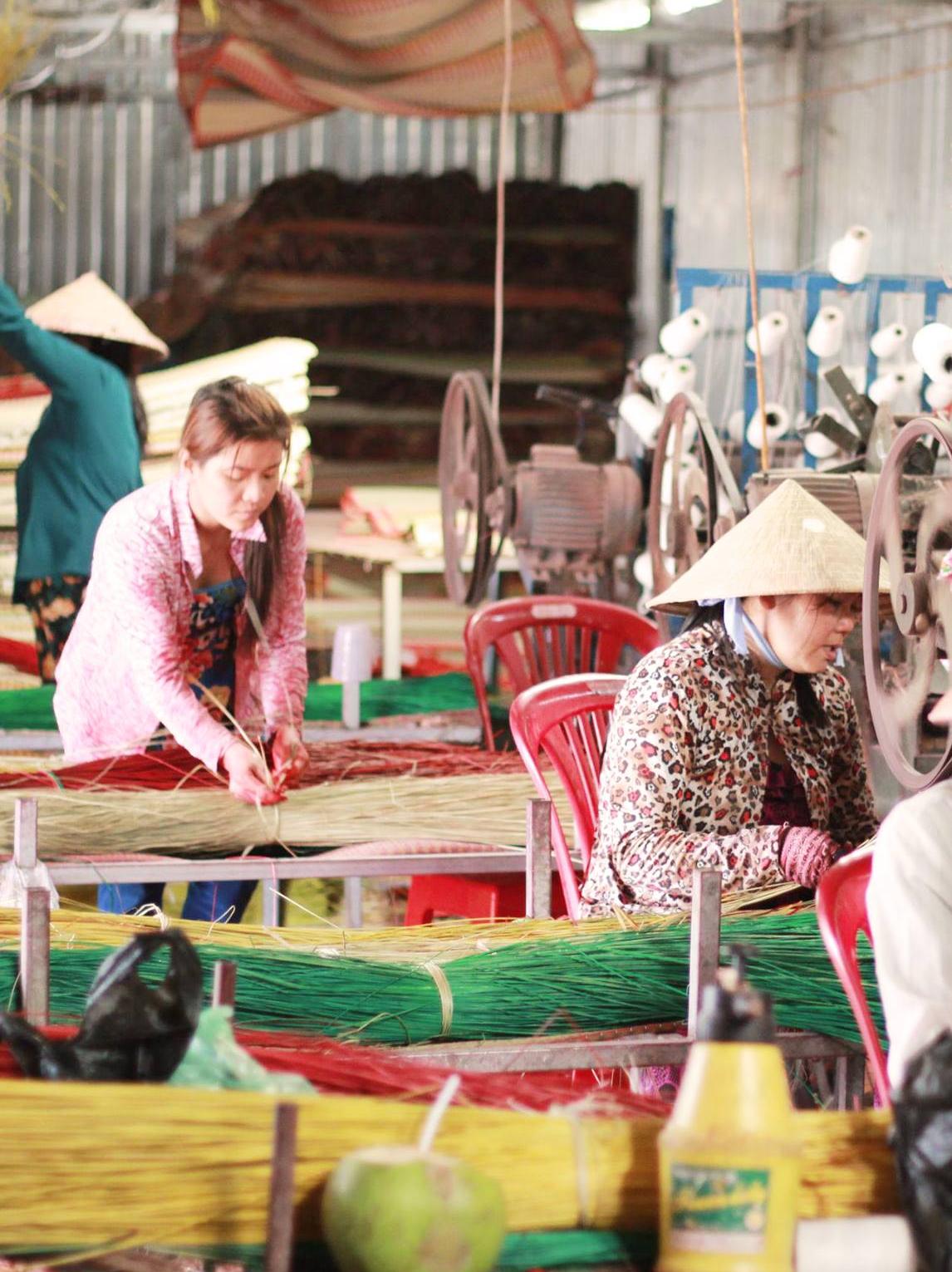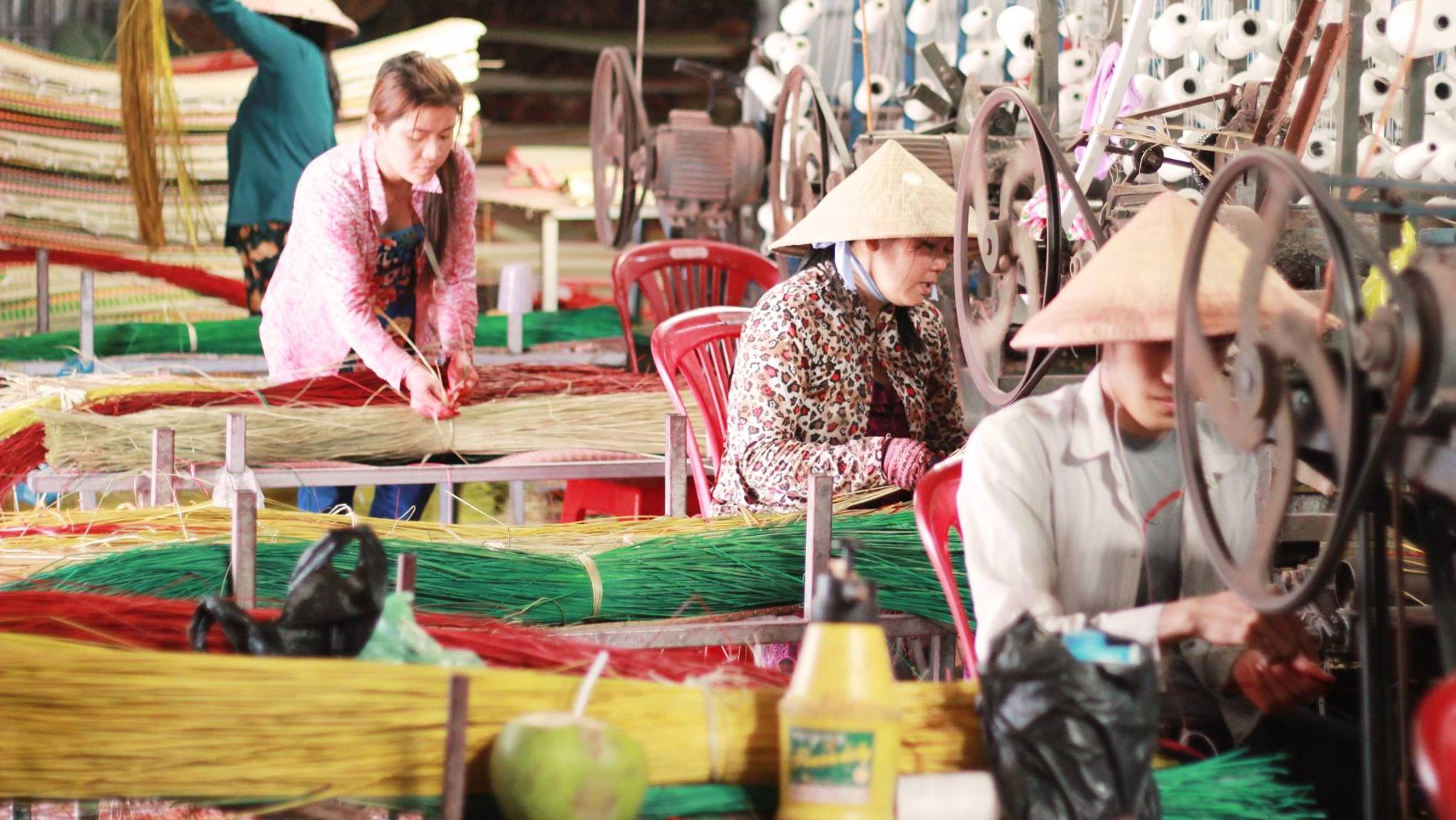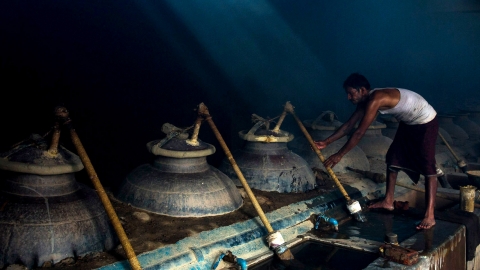Located next to the gentle Hau River, there is a village famous for its long-standing mat weaving craft, which is Dinh Yen mat weaving village. Located in Dinh Yen commune, Lap Vo district, Dong Thap province, Dinh Yen mat weaving village originated from the coastal plain of the North, but when they went to settle down, they brought the traditional mat weaving craft here.
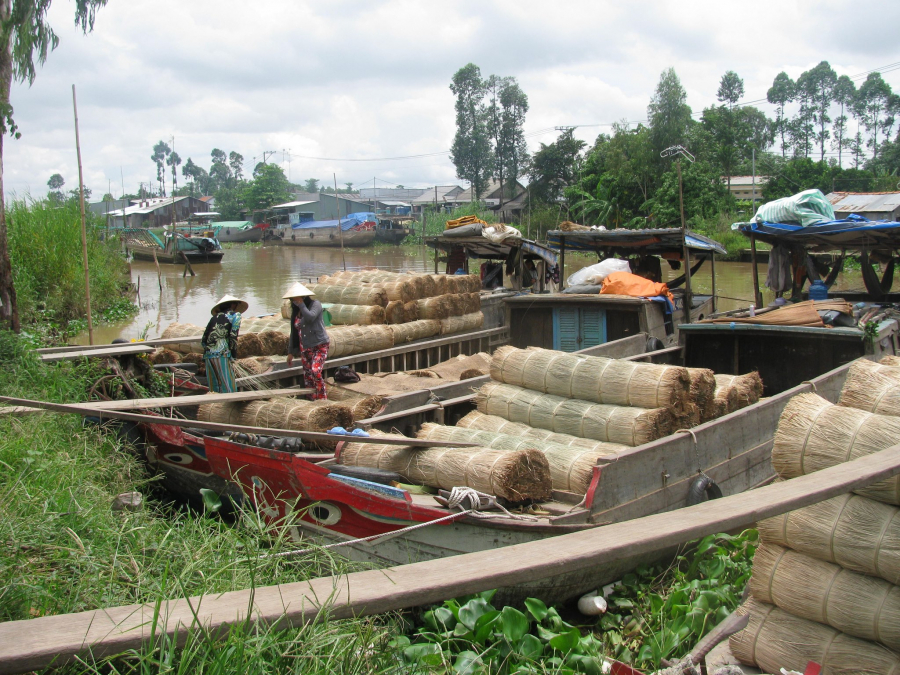
After more than 100 years of persistence, passed down from father to son, to date, mat weaving has become a traditional craft in Dinh Yen village. In 2013, Dinh Yen mat village was recognized as a national intangible cultural heritage by the Ministry of Culture, Sports and Tourism.

To get to Dinh Yen mat village, from Sa Dec city, visitors go along Highway 80 about 30 km to Lap Vo town towards Hau river and will reach Dinh Yen mat village with bundles of sedge dyed in many colors of green, red, yellow, purple... drying along the roadside.

Coming here, visitors will feel the bustling atmosphere created by the distinctive sounds of primitive wooden looms, automatic weaving machines, or the sounds of people passionately doing the traditional work that their ancestors have left for generations.
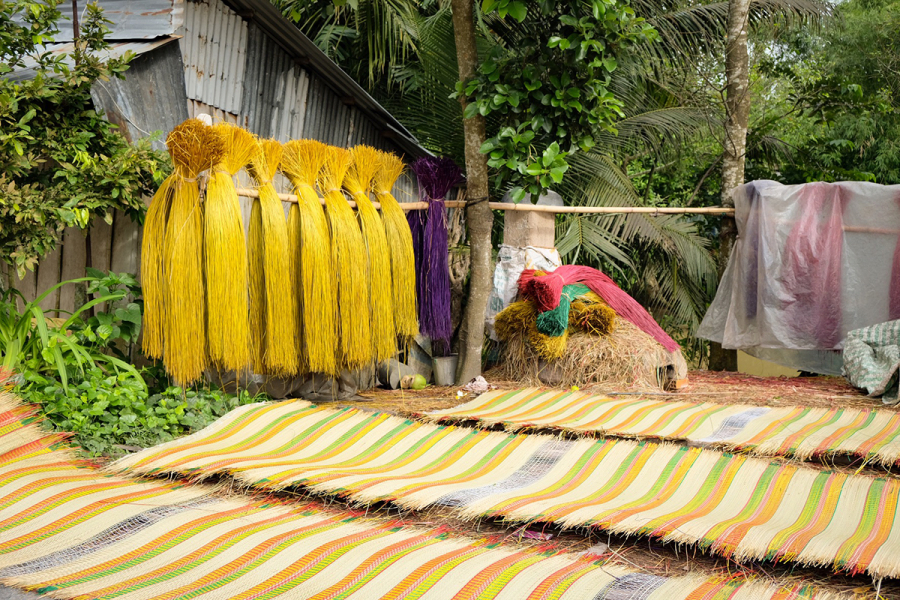

With the characteristics of a land with many sandbanks and alluvial flats along the Hau River, the land here is very suitable for growing ba trees and sedges - two main materials to make Dinh Yen Dong Thap mats. The simple sedge fibers, through the skillful and talented hands of Dinh Yen people, have become brilliant, smooth mats, beautifying every family.
The sedge chosen to be used as weaving material must be very old, with even fibers, not too big, and of a length suitable for the size of the mat to be woven. People will dry these sedge fibers for about 30 minutes to 1 hour, then dye the fibers in boiling water with a variety of colors such as green, yellow, red, etc.
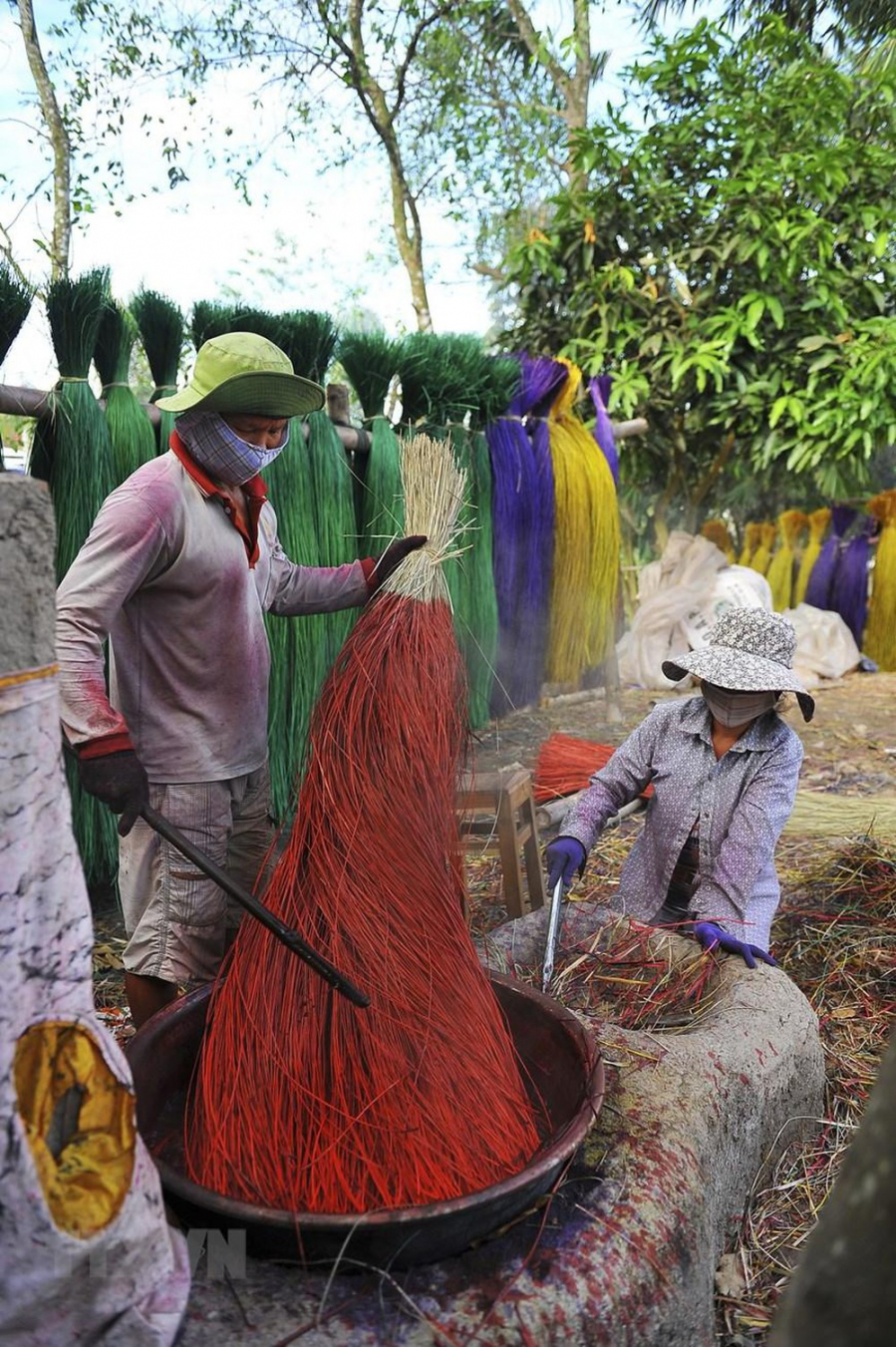
To get the exact and long-lasting dye, people have to boil the dye, then dip each small bunch into the dye pot, adjusting the number of dips to get a darker or lighter color. For darker colors, it usually takes 3 or more dips.
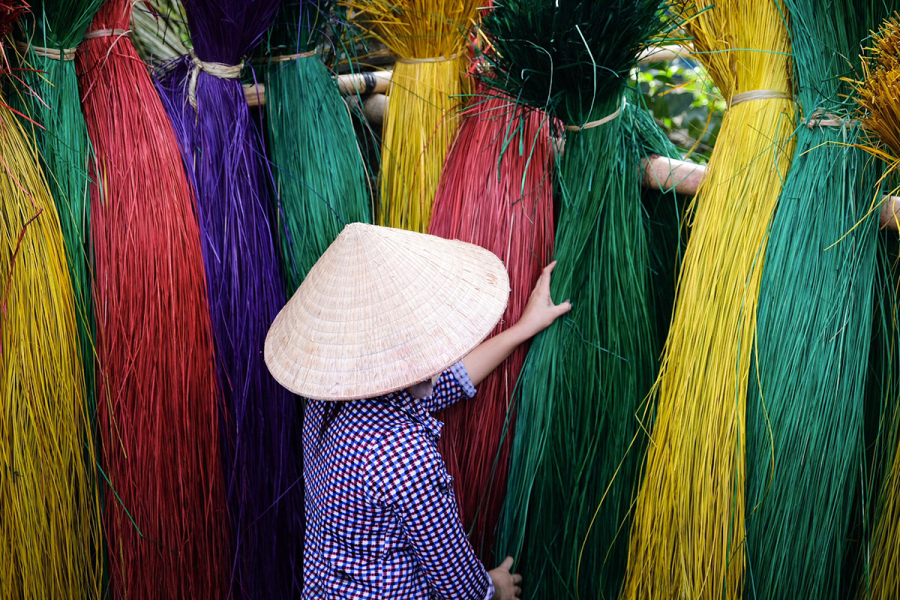

To weave a beautiful, high-quality mat, in addition to the steps of choosing the slats and dyeing, the people here have to perform many other steps such as: spinning thread, designing patterns, weaving, drying the raw product, bending the rim, sewing the edges... All of these steps require the weavers to be meticulous, skillful, and have some "family" secrets to create sophisticated, durable and beautiful mat products.
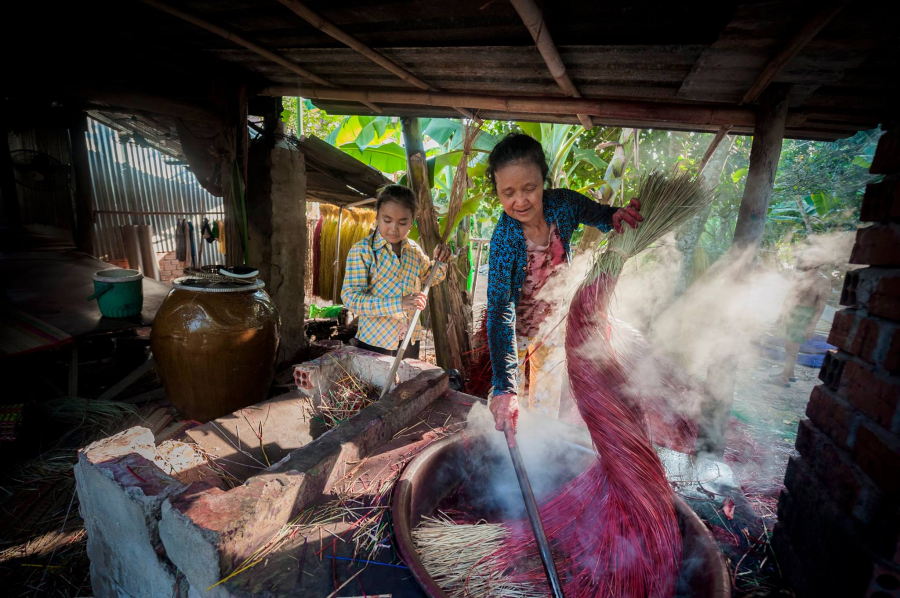
Among them, weaving mats is the stage that requires the worker to have the highest technique. Weaving mats requires two people to work together, one person to shuttle and thread the loom, the other person to pull the loom. During the weaving process, the worker must know how to skillfully combine colors, weave patterns and motifs on the mat while still ensuring harmony and balance in the whole.

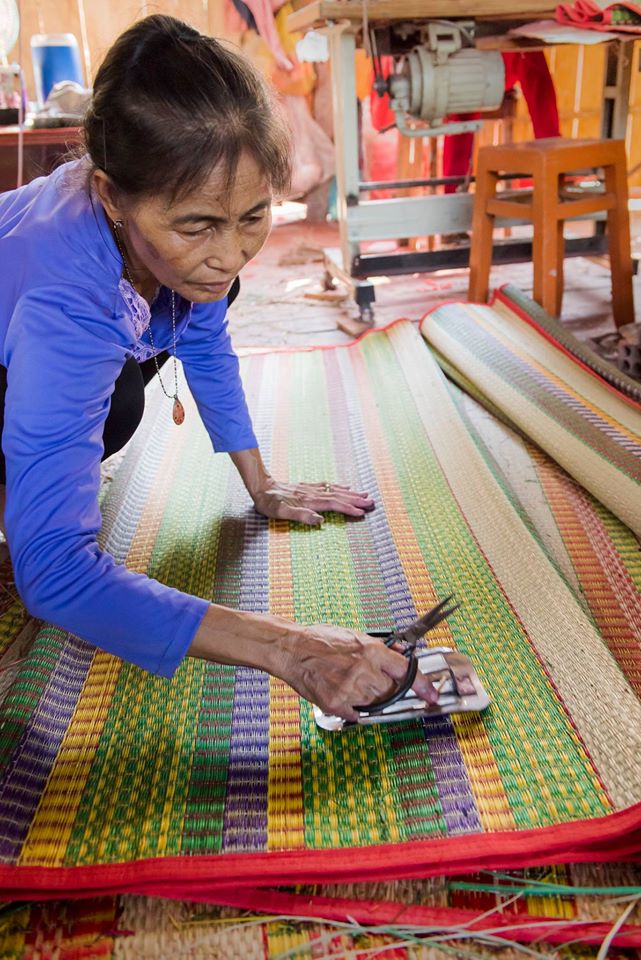
With such work, a hard-working day, a hand-weaver can only weave 3 to 4 mats. Therefore, nowadays, Dinh Yen people have started to apply advanced machinery and technology to weaving mats. The number of mats produced every day increases, the designs are beautiful, durable, sharp, however, hand-woven products are still more sophisticated and smooth.
Dinh Yen mats come in a variety of sizes, types, and designs, with high quality such as: square cotton mats shaped like a chess piece, flower-shaped cotton mats, Tra Nien mats, white mats, patterned mats, snail-scale mats, antique mats...
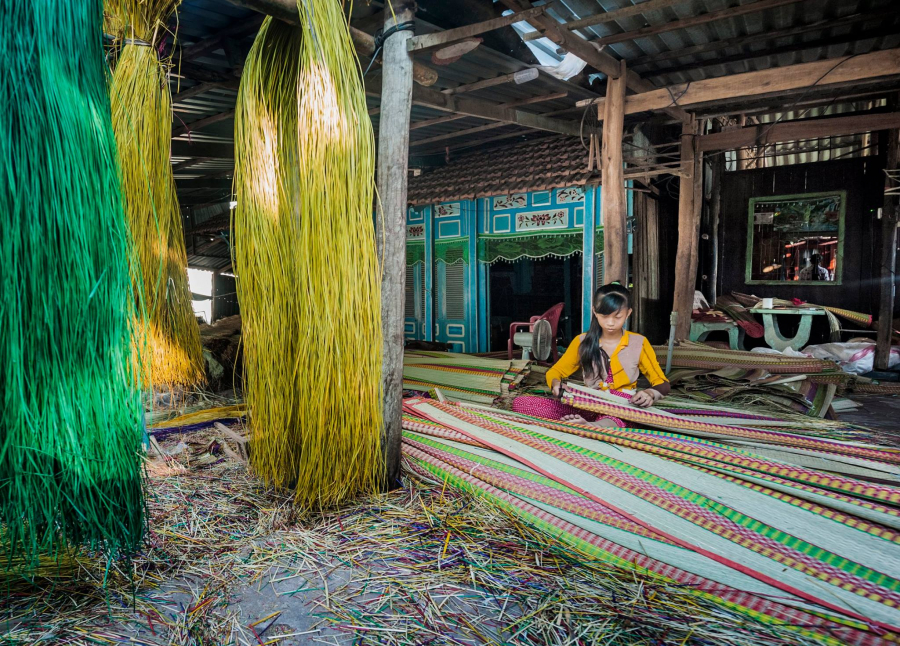
Coming to Dinh Yen mat village in Dong Thap, visitors will be amazed by a space filled with the colors of sedge fibers scattered from inside the house to the alley. Walking along the simple, rustic village roads, it is not difficult to see the image of the people here talking and laughing loudly but their hands stained with red and green are still weaving sedge fibers quickly.
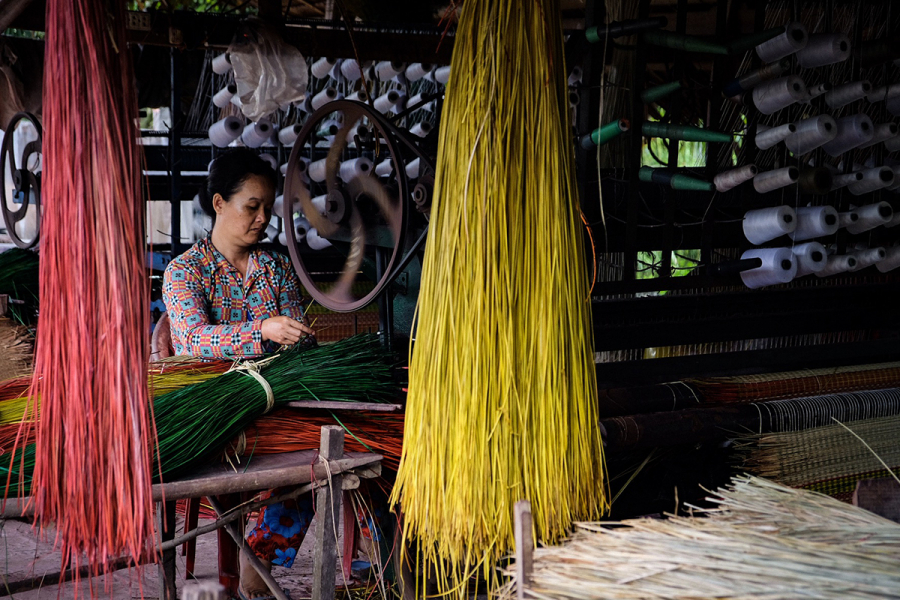
People here, from young to old, are all familiar with and attached to the work of weaving mats. Men are in charge of selecting raw materials such as cutting down the bauhinia and sedge trees, drying and stripping the fibers, while women are in charge of dyeing and weaving the mats.

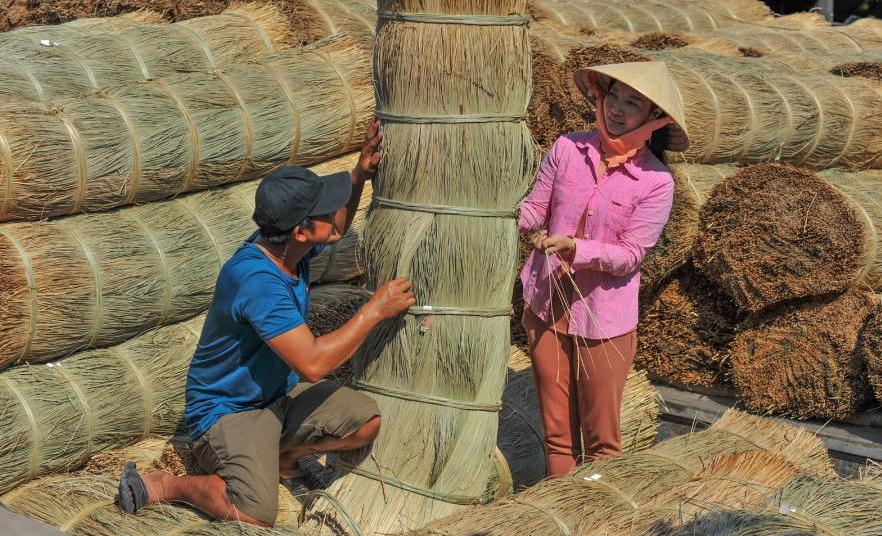
In the warm and intimate space of a peaceful countryside, visitors will witness with their own eyes how the local workers make a mat. Each stage, each line is done by the craftsman with diligence and meticulousness, pouring in a lot of passion and emotion to weave the perfect beautiful mats for life.
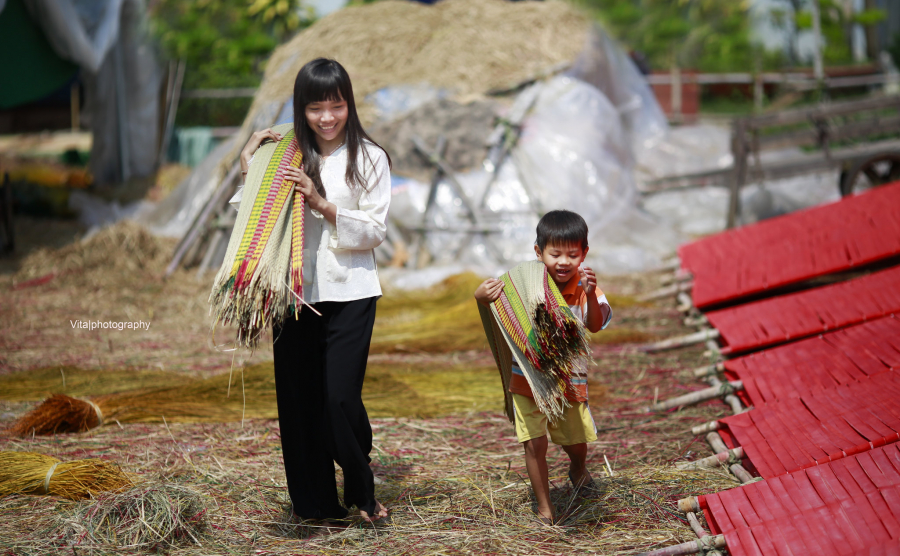
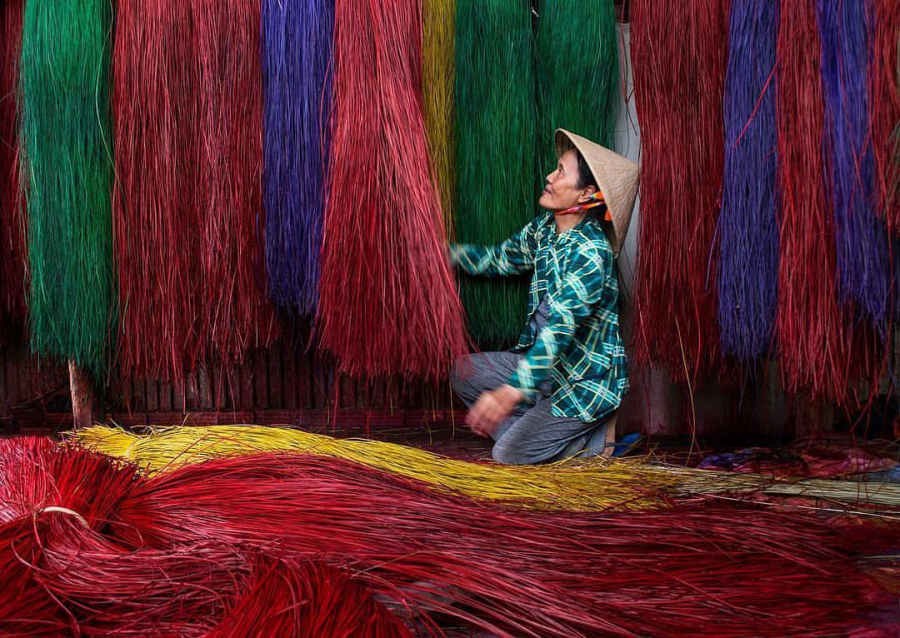
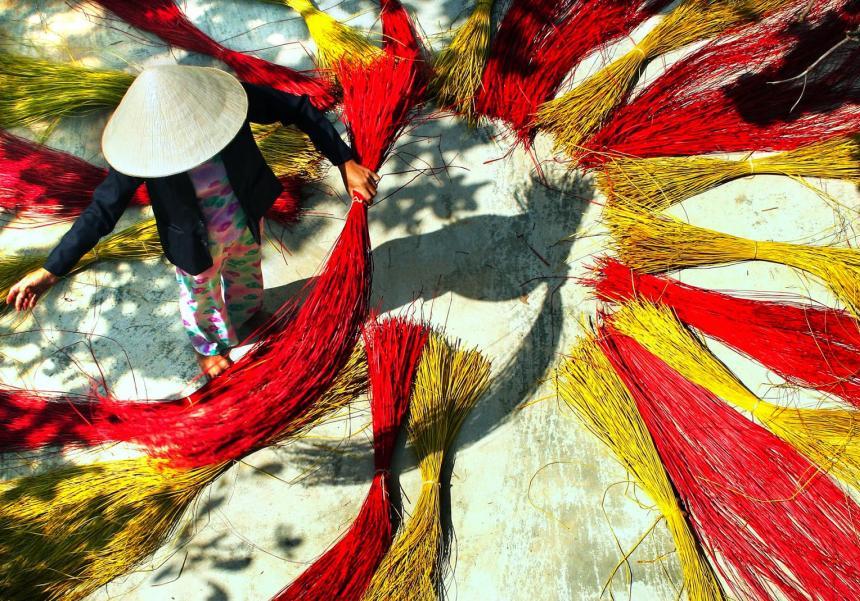
Despite the ups and downs and hardships, after hundreds of years of perseverance with this land, the mat weaving profession has been attached to and become an indispensable part of the lives of the people of Dinh Yen. The people here, for generations, have always been devoted to preserving and promoting the mat weaving profession as an indelible traditional national identity.

Visit Dinh Yen mat village once to admire the brilliant colors here and have the opportunity to learn more about the origin of the simple, rustic mats that have been associated with Vietnamese life from ancient times until now.





